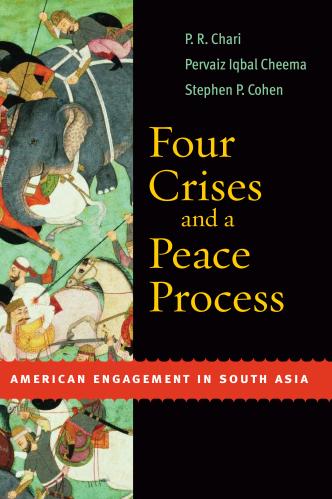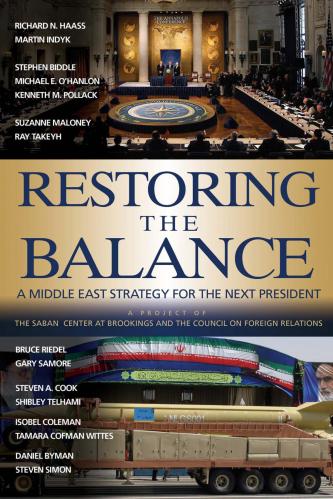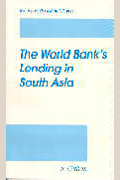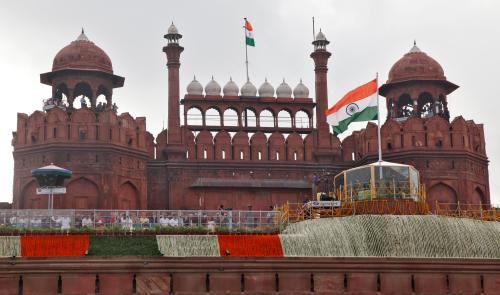In 2016, Syrian President Bashar Assad took back Aleppo, Turkey experienced its bloodiest coup attempt, and then Ankara aligned with Moscow on Syria—every year we witness surprises or shocks that can transform countries, regions, and even global dynamics. Sometimes these events appear small, but recall 2011, which showed how a seemingly local event of a fruit vendor setting himself on fire could cascade and eventually disrupt sizeable portions of the world. With the beginning of a new year, it is important to explore plausible if not probable events that could be on the horizon, particularly for the tumultuous Middle East and South Asia where societies remain extremely fragile and susceptible to sudden changes.
Several types of surprising events could change the political landscape within and between countries in these regions in the coming year. Predicting future shocks is almost impossible, but imagining the types of events and potential examples helps identify vulnerabilities, explore the consequences, and consider opportunities to respond and mitigate the situation.
1. Loss of regional stalwarts
The sudden departure of a status quo leader could dislodge a key pillar of stability and offer inspiration to would-be challengers. On the other hand, the removal of central opposition figures would be a wild card, offering an opportunity to broker a truce but running the risk of violent retaliation from followers.
- In the Middle East, the death of longstanding leaders—under natural or suspicious circumstances—could prompt regime infighting, widespread violence, and possibly an extended power vacuum. Although octogenarian Palestinian leader Mahmoud Abbas solidified his position at last year’s Fatah conference, he failed to restore party unity, name a deputy, or bring in younger voices in preparation for succession. Jordanian King Abdullah, although relatively young, leads a country under intense strain from sluggish economic growth, unprecedented numbers of Syrian refugees, and attacks from ISIS. Any successor to Iranian Supreme Leader Khamenei—in his late 70s and with health issues—would have to balance competing agendas and power centers. The death of Islamic State leader Abu Bakr al Baghdadi or Hezbollah Secretary General Hassan Nasrallah could prompt followers to lash out in multiple ways and locations—just as the killing of the former Hezbollah leader Abbas al-Mousawi provoked retaliation in Buenos Aires in 1992.
- In South Asia, the loss of leaders in Afghanistan, India, Bangladesh, or Pakistan would probably hinder progress on multiple fronts: economic or democratic reforms, media freedom and religious protections, nuclear discussions, and counterterrorism efforts, to mention a few. In Pakistan specifically, the disruption of the delicate civil-military leadership balance could result in a loss of central control and push Pakistan ever closer to the looming brink. In Bangladesh, the departure of the two women who have largely alternated ruling since the country’s independence in 1971 would create a vacuum that could destabilize the country. This might even force a reluctant Bangladeshi Army to take power as a last measure to avoid complete chaos. India’s Prime Minister remains a prime target of terrorists and other extremists, and his nascent efforts to improve relations with Pakistan would almost certainly be damaged beyond repair. Finally, the loss of the Dalai Lama, in exile in India since 1959, would most likely increase China-India tension over Tibet.
2. Climate game changers
These regions are highly susceptible to changing climate conditions. Rising temperatures, protracted droughts, destructive storms, and floods have produced short and long-term political, economic, and diplomatic repercussions. A severe drought, worsened by a warming climate, drove Syrian farmers to abandon their crops and flock to cities, helping trigger the ongoing civil war. Likewise, in South Asia, devastating cyclones and major earthquakes have overwhelmed government response capabilities, requiring significant Western disaster relief and humanitarian aid.
- This past summer the Arabian Peninsula experienced its hottest temperatures on record, moving closer to becoming uninhabitable. If this trend continues, the world could witness a new, larger wave of Middle East refugees fleeing north for cooler temperatures and better living conditions with no prospect of returning. Extremist groups could exploit this migration to recruit and encourage attacks against developed northern countries. Moreover, increased refugee flows would devastate European security, stability, and unity, unraveling the passport-free Schengen area and perhaps the EU itself.
- A natural disaster in South Asia on the scale of the Nepal and Pakistani earthquakes or the 2004 tsunami in Sri Lanka would kill or render homeless hundreds of thousands, particularly in megacity coastal slums. The Maldives is slowly sinking, threatening the physical destruction of the thousand-island country. Relief efforts are often politicized, even in the face of such catastrophes, delaying critical aid and catalyzing popular discontent against local and national governments. If Western aid is prohibited or delayed, or regional responses too slow, terrorist organizations and other sub-state actors could exploit the vacuum, moving quickly to provide relief through their humanitarian wings and increasing their appeal, fundraising, legitimacy, and recruitment.
3. Geopolitical miscalculation
These regions are home to decades-long geopolitical rivalries which influence a broad range of domestic and regional policies but have stopped short of major military conflict. A miscalculation or misunderstanding could bring these rivals into more direct conflict. Both Saudi Arabia and Iran want to be the preeminent power in the Middle East, exploiting political, sectarian, and familial relationships to strengthen allegiances and influence dynamics. India and Pakistan’s historical rivalry grew as both countries acquired or developed nuclear weapons in the late 1990s, bringing the consequences of miscalculation or overreaction to a global scale.
- For decades, the Saudi-Iranian rivalry has played out militarily and politically through proxies around the region, including in Syria, Lebanon, Yemen, and Iraq, while avoiding direct confrontation. However, the Saudi execution of Shiite cleric Nimr al-Nimr in early 2016 has brought tensions to a boiling point, resulting in a severing of diplomatic relations between the two countries. If Riyadh perceives a threatening increase in Iranian influence while still questioning U.S. security guarantees, the younger generation of leaders might be more willing to risk directly challenging Iran’s influence, perhaps by dramatically increasing support to Sunni tribes in Iraq after Mosul or by formally annexing Bahrain.
- India and Pakistan attempt to contain their rivalry, recognizing the danger of two nuclear powers facing off so close to each other, but at the same time, both countries employ various alternative means, including accusing each other of supporting proxy groups, to influence dynamics in the other country. Without resorting to nuclear weapons, the rival intelligence services could take the gloves off in an extensive covert war in Afghanistan, escalating operations and tensions there and across the region as Delhi and Islamabad jockey for influence in the wake of a lesser U.S. role. A major terrorist attack against Indian civilian and government targets, or an attack against Chinese interests in Afghanistan remains a critical challenge rife with the potential for miscalculation by the perpetrators, especially if discovered to have roots in or links to Pakistan.
4. Popular awakening 2.0
Throughout the world, popular discontent with traditional institutions and distrust of authority remain high. The Arab uprisings of 2011 were an expression of years of pent-up frustrations, and now six years later, the populations of these countries remain disillusioned with the quality of governance. Political dynasties in South Asia are the norm, and third party alternatives are either short-lived or too small to have much impact. In this volatile environment, it is not hard to imagine a second wave of street protests, potentially more organized and violent and in a greater number of countries. The critical unknowns are where it will start and what might trigger this next surge.
- As oil revenues, tourism, and trade remain depressed, regimes throughout the Middle East are struggling to restore the old social contract which depended on giving perks and financial incentives to elites and key constituent groups. Lacking resources to meet popular expectations, many governments have resorted to repression to quell discontent—making the region even more combustible today than in 2011. With failing leadership, Algeria could be next in line for popular unrest with many refugees fleeing across the Mediterranean, and Egypt could be poised for a second, bloodier uprising. If oil prices do not rebound, wealthy oil producers could see their unemployed populations turn on them.
- South Asia has not experienced the popular protests seen in the Middle East in the past decade, but limited economic prospects for young, educated men, religious disillusionment and alienation, and increased radicalization from an influx of funding from more hardline Salafi organizations could fuel social unrest and sectarian tensions in these highly populated, diverse countries. The 2015 lynching of a Muslim man in India thought to have eaten beef highlighted the risk of increased Hindu-Muslim tensions in South Asia and undermined India’s narrative of religious tolerance, both as a nation and under the leadership of Prime Minister Narendra Modi. Reports of Buddhist attacks on Muslim businesses in Sri Lanka and subsequent riots since at least 2012 highlight another aspect of communal tensions in the region which could easily spark a wider conflagration.
Mitigating risk
These potential events could catalyze a range of long-term problems for their respective regions as well as for U.S. interests. Washington probably has few options to prevent these events, but several policy approaches could help make these countries more resilient and mitigate risk for the people of the region, U.S. partners, and U.S. interests.
- Encourage outlets for civil society: Limiting free speech and civil society only increases the tension in these countries. Through diplomatic efforts and private sector engagement, a steady drumbeat can be maintained on the value of free speech.
- Promote contingency planning: Changing climate conditions and leadership transitions are commonly referred to as “known unknowns” because we see them on the horizon but do not know the exact circumstances or timing. Working with partners in these governments to consider potential scenarios and plan for those events could limit the uncertainty and possibly the fallout when they happen.
- Reassure longtime partners: With the potential for miscalculation and overreaction in these heavily armed regions, U.S. assurances and engagement become all the more important. Direct and frequent engagement helps to avoid surprises by offering a window into conditions on the ground. Strong, steadfast partnerships will provide the U.S. an opportunity to step in early and help calm fears and lower tensions before an incident cascades uncontrollably.
The authors are paid employees of the U.S. Government (USG) and conducted this research under a USG-funded fellowship at an external institution. All statements of fact, opinion, or analysis are those of the authors and do not reflect the official positions or views of the USG. This does not constitute an official release of USG information. Nothing in the contents should be construed as asserting or implying USG authentication of information or endorsement of the authors’ views. This material may reflect USG-required edits for classification and compliance with legal obligations.









Commentary
Expecting the unexpected: Four potential shocks in the Middle East and South Asia in 2017
February 23, 2017